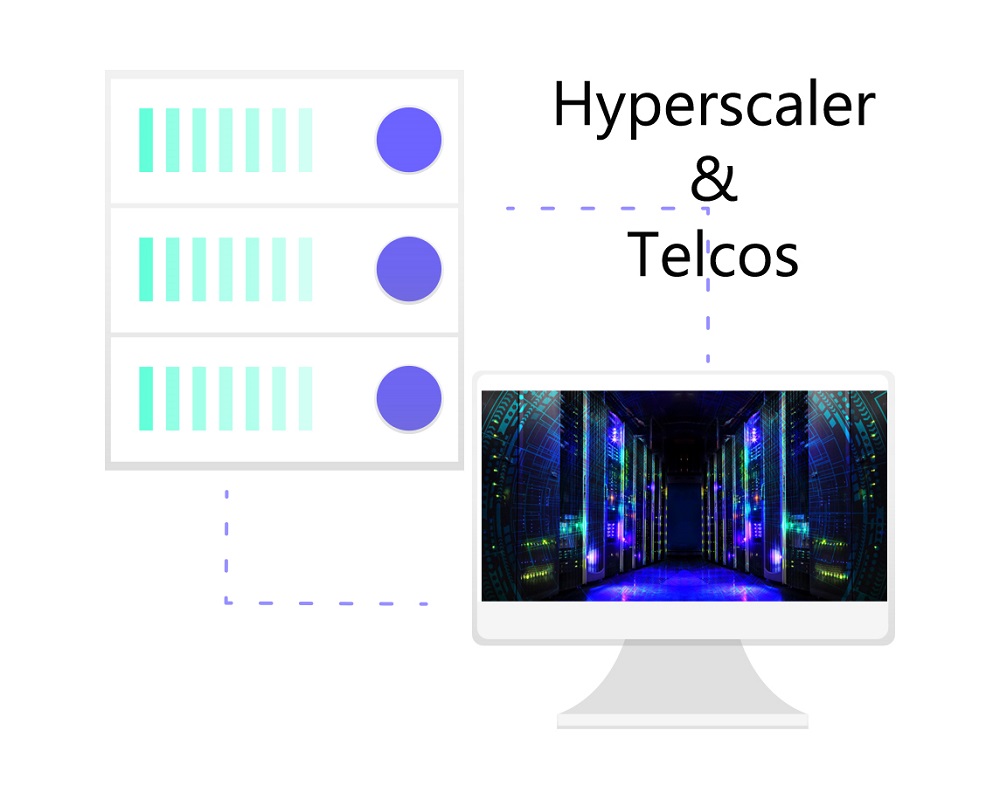Data science has come to be recognized for its superior value and effectiveness. With time, data science has proved its high worth and proficiency. The term “big data” encompasses datasets that are larger and have a greater number of additional information attached to them than are prevalent in “small data science” situations.
To build a good company, today it is necessary to use data. Python is a multi-paradigm programming language more and more of the large social media sites, such as Snapchat, Gmail, Nokia, and so-calla’s Yahoo Mail are adopting this terminology. Python is one of the fastest-growing programming languages, so there’s no denying you will have to keep up with the competition if you want to stay in the industry.
Python was designed for the web, but it has grown and is used in many other contexts due to its popularity. More and more leading telecom carriers have started forming strategic alliances with AWS, Azure, and Google Cloud over the last few years. However, it also means that telecom service providers and their public cloud partners and end-users all across the spectrum of industries have to contend with is the challenge of maintaining data consistency in real-time across private and public cloud platforms.
In the highly scaled market globally, it is often the case that incumbents offer less in the way of a direct benefit to their customers, who instead find that they have a greater mutual need with their telco partners. So is this something you’ll want to continue in the future, or will it just be a passing attraction? Let’s check below!
Python and automation can eliminate resistance
Automation and Python development may offer telcos firms the opportunity to achieve competitiveness by leapfrogging from a situation of late-follower to early mover. To give customers a perfectly smooth experience in all touch points (phone, web, and voice), such techniques should be employed in all conversations with businesses of the client from the start to finish. A few other telecoms had also resorted to implementing statement AI or mechanization resolutions, but have been unable to bring clients the much-required degree of zero friction ease of use, both from the home to the front door and back final stage.
Both hyperscale and telcos companies seek to exploit the potential at the margin cloud computing is hitting its stride.
Hyperscalers such as Amazon and Microsoft have risen steadily, going beyond the one-per-operatorships market, have also become integral to the facilities by making interface alliances and then implementing systems within telco facilities, which gives them a foothold in the network, among mobile cloud companies.
More and more telecoms companies have seen their attachment in the cloud, allowing them to continue to operate their online platforms from the cloud is seen as being advantageous to them. Even so, those who have not yet established programs on how to integrate such joint ventures into an aggressive up-market business model, where to use their facilities to extend their reach, or perform throughout the interface marketplace, and neither are they familiar with exactly what function they could perform above that.
Expanding the scope of service offerings for providers and hyperscale
Numerous companies see interface developing software as a great avenue for accelerating the introduction of new technologies as well as services to different tiers of the business because of the funds they already have at the disposal. An intention to broaden their number of benefits, from interconnection as well as move into another system and browser storage is their goal. While operating at the edge networks, firms could provide infrastructure like service and modulation techniques to their customers, they are better able to do more. Cloud computing uses computing along with border or edge technologies to enable operational activities that are themselves while they move to a cloud as well as a virtualization of the system, allowing inner computing to use their edge
Competitors have moved to cooperation
Hyperscalers as well as telcos are both trying to develop and capture the market at the frontier. Despite their specific differences, even so, every other stockholder appears to miss the full body of data necessary to justify their thesis. This is where cloud technicians and hyperscalers are located, this is where their computing resources and infrastructure live. Technicians as well as hyperscalers originally considered each other to be as a threat, each following their methods to market entry. These have caused the development of new players on the board to occur in a plethora of distinct ways.
Final Words: What telcos expect to see?
Collaborations among the two of the industry would then help to enable innovation usage to speed up its implementation. New platforms have disrupted companies and the cloud services platforms alike, forcing both to quickly create new approaches to new markets, such as data center hyperscale cloud operators who keep up with more innovation and challenging the businesses’ reliance on inflexible attitudes towards change. Many enterprises are already expanding their use of cloud computing to apply it to their entire edge environments, and as a result, they intend to capture the vast majority of the huge portion computing market in the future.
A booming industry that does not support its early-and potential future-entry by telcos who wish to lead and innovate may have less room for expansion because of technology developed by others, and thus potential newcomers that do not wish to join in. This paper examines what telcos need to take into account concerning their edge methods, and what responsibilities they may play with hyperscalers in the market when working to carriers on cloud computing.
